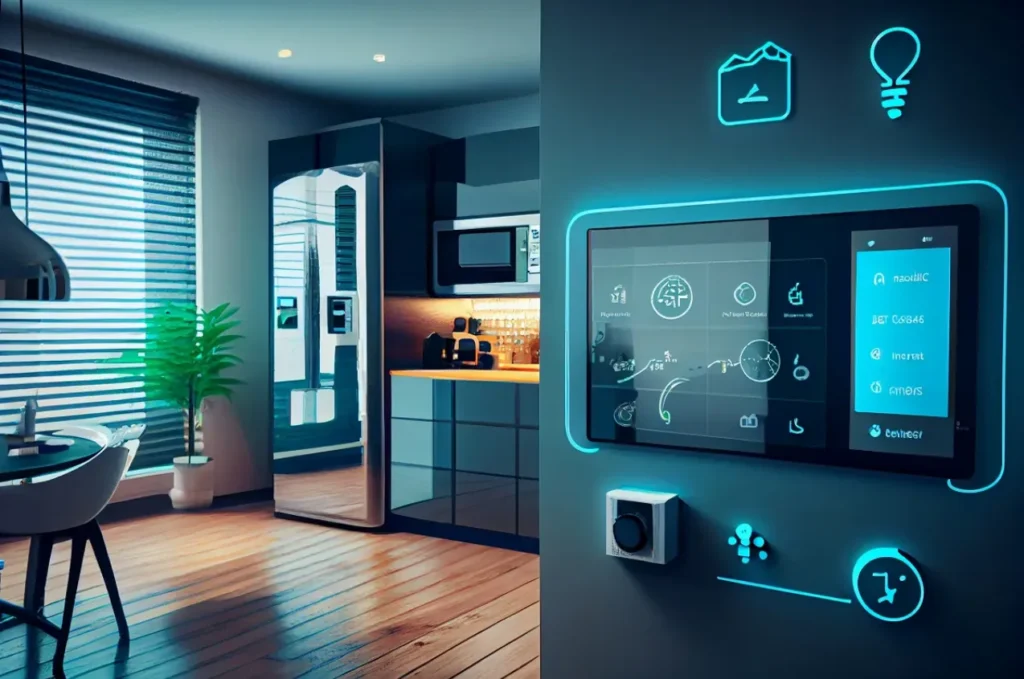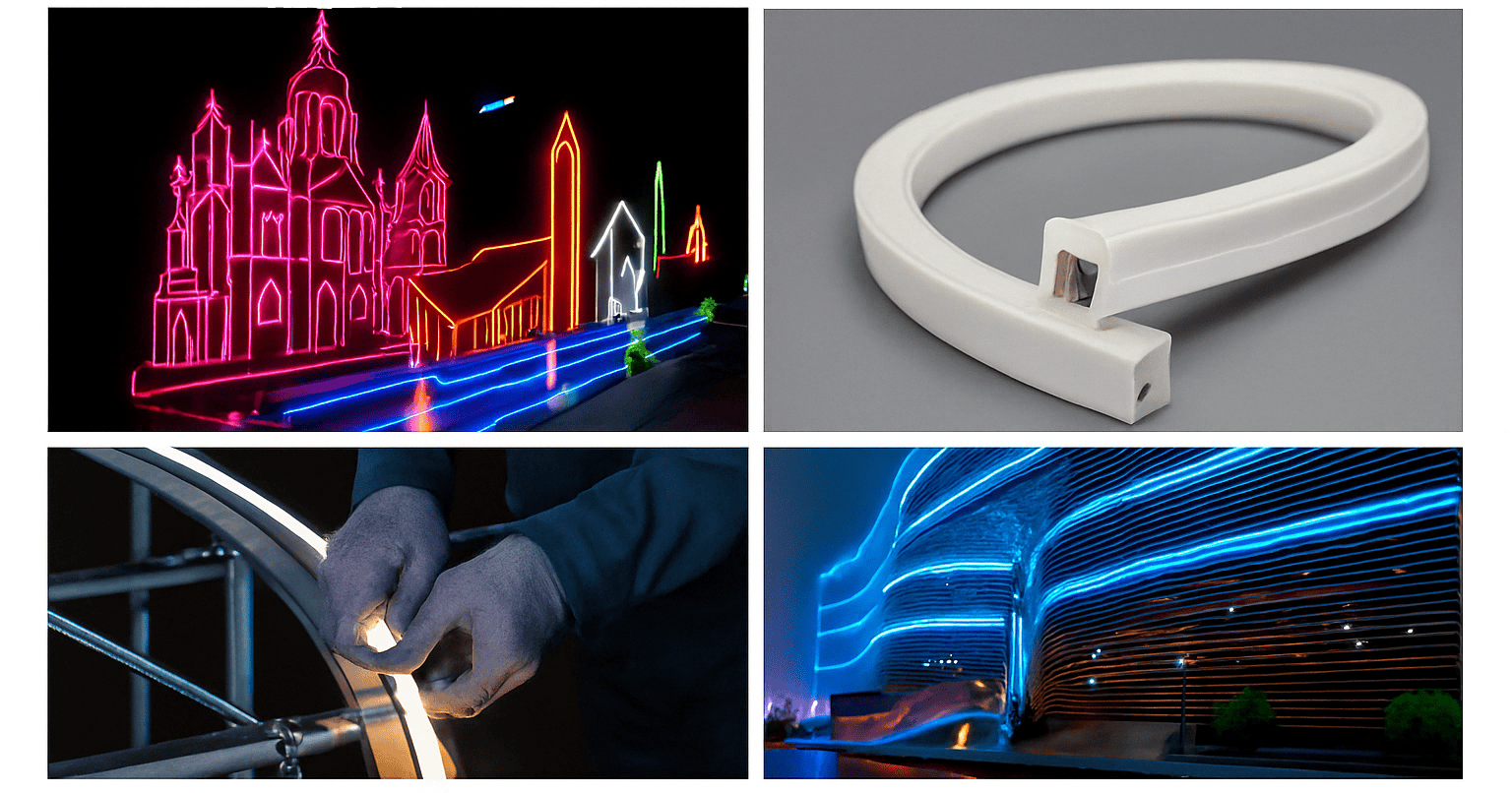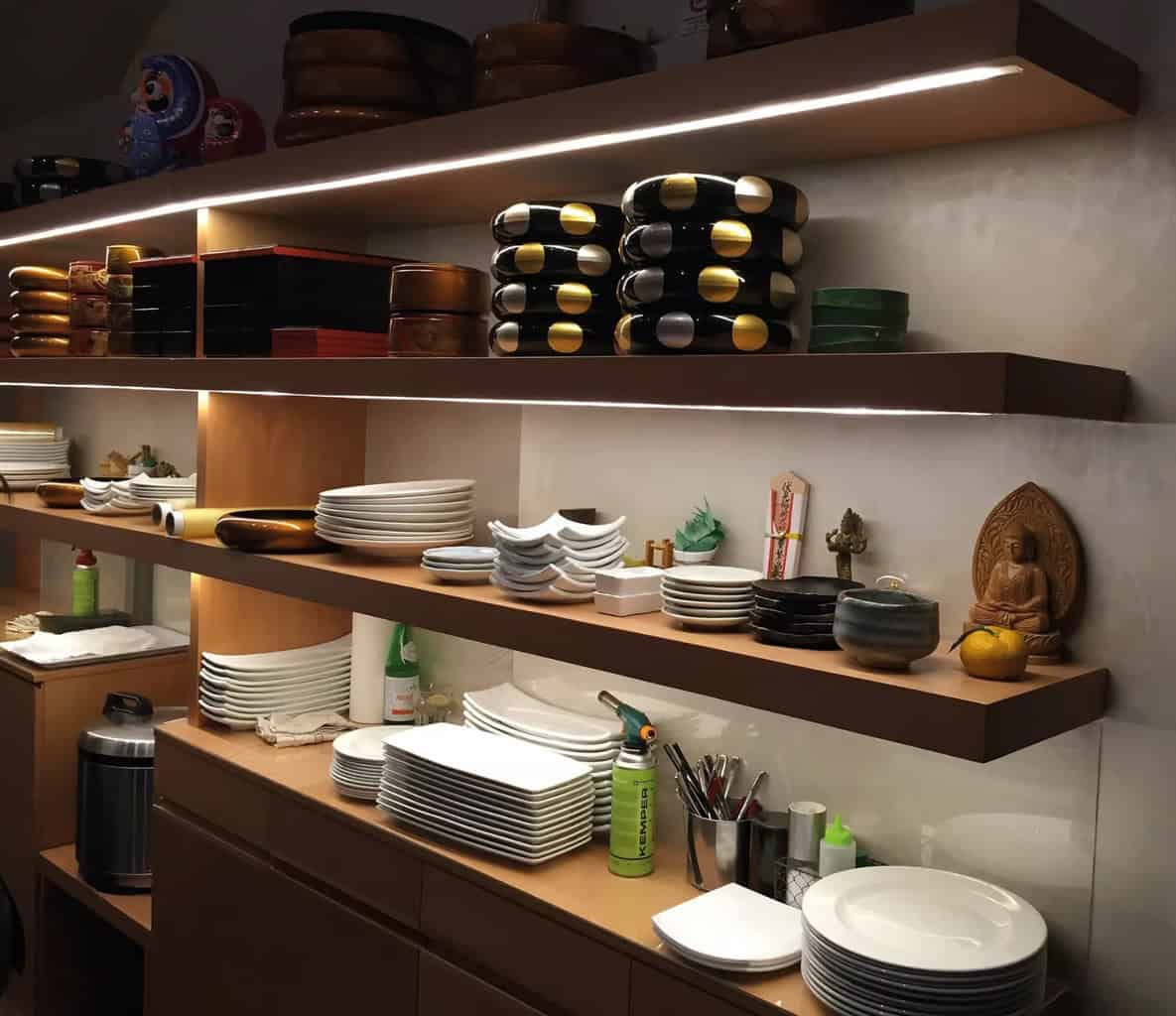Whether it is a single family home or an office building, there is a growing demand for comfort and versatility in management such as air conditioning, lighting and access control systems. Efficient energy use is also becoming more and more important, but only intelligent control and active monitoring of equipment within all systems can achieve more convenient, safer and lower energy consumption needs. Practical experience tells us that this means more data transfer from sensors and various types of terminal equipment to control and monitoring centers.
In order to transmit control data to all building management components, the system needs to ensure that all components communicate through a common language to solve the problem of isolated devices: for example, a unified KNX bus standard technology for manufacturers and application fields.

Overview of the KNX intelligent control system
KNX is the world standard communication protocol for smart home and building control. The system is 25 years old and has a stable performance in the field of KNX building automation. Systems equipped with KNX technology can easily help you remotely control your home appliances from a single touch panel. Therefore, today this technology is widely used in buildings: private homes, commercial complexes, industrial buildings, universities, hospitals, etc.
The KNX system is unique in its versatility and flexibility. It is not tied to a specific hardware platform and can be implemented via twisted pair cabling (KNX TP), power line networking (KNX PL), Ethernet (KNXnet/IP) or radio (KNX RF). Moreover, due to its ability to adapt to new smart home technologies and updates, it is future-proof.
The KNX system has also been lauded for its international recognition and standardization. It complies with the standards of ISO/IEC, European (CENELEC EN 50090, CEN EN 13321-1) and international (ISO/IEC 14543-3) Electrotechnical Commission. This widespread acceptance and compliance with the global standard underscores its reliability and availability in different regions and applications.
Notable Milestones and Improvements
| Year | Milestone |
| 1999 | Formation of the KNX standard through the merging of three previous standards-the European Installation Bus (EIB), Batibus,and European Home Systems (EHS) |
| 2003 | Recognition by the European Committee for Electrotechnical Standardization (CENELEC) as a standard for home and building electronic systems |
| 2006 | Recognition by the International Electrotechnical Commission (lEC) as a standard for home and building control systems |
| 2007 | Introduction of the KNX RF (Radio Frequency) standard,enabling wireless communication between devices |
| 2010 | Launch of KNX Web services for accessing KNX installations via the internet,providing a major step forward forremote access and control |
| 2013 | Introduction of KNX Secure,a major enhancement of the KNX system to increase security measures and combat cyber threats |
| 2017 | Integration of KNX loT (Internet of Things) capabilities,aligning KNX with modern trends towards increased connectivity and data sharing |
| 2020 | Introduction of ETS6,the latest version of the Engineering Tool Software (ETS) used to design and configure KNX systems, enhancing userexperience and system design capabilities |
What is the KNX System?
KNX is a communication protocol widely used in home automation systems worldwide. As an open standard, it allows devices from many different manufacturers to work together seamlessly, providing users with a large selection of products for their home automation projects.
KNX acts as a “universal language” that enables all connected devices to communicate with each other regardless of their specific functionality. Whether it’s lighting, heating, security, energy management or multimedia systems, KNX can integrate all these components into a single cohesive system.
In a KNX-based smart home, different devices can be programmed to collaborate with each other to automate various tasks according to predefined rules or scenarios. For example, blinds can be programmed to lower automatically when a room reaches a certain temperature, or lights can be set to dim when a movie starts playing on a home theater system.
In addition, KNX is not limited to controlling devices in your home. With its support for IP networks, KNX also allows remote access and control, which means you can monitor and manage your smart home from anywhere in the world.
A notable example of KNX interoperability is its integration with BAS-IP intercom systems via session initiation Protocol (SIP). SIP is a signaling protocol used in IP networks to initiate, maintain, and terminate real-time sessions. With this integration, users can answer intercom calls directly from the KNX control device, open doors and communicate with visitors, thus enhancing convenience and security. This once again demonstrates the flexibility and versatility of the KNX protocol, underlining its position as the leading choice for home automation projects.

The basic components of a KNX system
1. Intelligent switch
The smart switch is the core part of KNX, which can be controlled remotely. Timing control and scene control functions.
2. Dimmer
The dimmer can adjust the brightness of the lighting equipment to adapt to different environment and scene requirements.
3.Sensor
Sensors are used to sense environmental parameters, such as temperature. Humidity, light, etc. are transmitted back to the processor according to the induced data, and then the related lighting equipment is adjusted.
4. Gateway
As the brain of the system, it is responsible for receiving and sending signals, and realizing the interconnection between various devices.
5. Panel and mobile APP
Users can control the lighting equipment through a touch panel or a mobile phone app to achieve remote operation.
Main application areas of KNX
In the field of KNX intelligent building systems, we also have a complete product line and solutions for different building types. Through the combination of various control strategies such as on-site intelligent panel control, human body induction control, meteorological center control, remote control, etc., we can truly realize the modern intelligent building control concept of comfort, energy saving, economy and safety.
Main fields: Smart office building Smart home smart hotel Hospital School Station Gymnasium Museum Exhibition center Shopping mall……
• Office building
Through the intelligent panel, you can adjust the brightness of the light and the Angle of the curtain, freely switch the scene control, such as: working mode, visiting mode, rest mode, etc., and also enable/disable the hall body sensor.
• Hotel Area
Human body sensor and panel control scheme, combined with centralized control and time control mode; The air conditioning control adopts the network system, the hotel management center can monitor and control the temperature in the area in real time, and select the set temperature of the air conditioning according to the time and the flow of people and other factors to achieve energy saving.
• Cafe/Meeting Room
According to the actual requirements, through the intelligent panel installed in each function area to realize the light on/off, dimming; Air conditioning on/off, temperature adjustment; Curtain rise/fall/stop/and scene switch and other controls. Set various scenarios according to various needs, users can manually adjust the local brightness of the meeting room and flexibly control the lighting details of each area
• Outdoor area lighting
The system automatically completes the control of the lighting according to the preset running time to meet the requirements of the lighting illuminance in the time period such as late night. In the daily operation mode, you can also turn on different light brightness in different periods, save energy, extend the service life of the lamp, and save the maintenance cost of the lamp.
• Parking lots
During non-busy hours, the parking space guidance function can be realized through the joint motion control with the parking lot management system. Whenever a vehicle enters the garage, the system only opens a certain area as a special parking area, and the system automatically turns off the normal lighting in other areas and retains the emergency lighting.
The system automatically controls the fans and exhaust fans in the underground garage. Turn on the exhaust fan during peak traffic hours. At low peak, the exhaust fan is automatically operated intermittently to achieve the effect of energy saving.
• Sports venue
The central control system displays and centrally monitors and controls the lighting, electric sunshade and exhaust equipment in each area of the venue through the partition graphical interface
The system can switch various modes by touch screen or intelligent panel, such as training mode, non-broadcast game mode, international color TV track and field game broadcast mode, international HD football game broadcast mode, etc.
In conjunction with the fire, when there is a fire alarm, the system forcibly closes the normal lighting in the public area and starts the emergency lighting control.
• Museum
The lighting of important exhibition areas is controlled by dimming. When someone approaches the collection or display case, the system moderately brightens the light, and automatically dimms it when no one is there. Turn off the lighting when closed. The light changes slowly and softly
Control room temperature in all areas of the building. According to the different temperature requirements of various functional areas (such as storage areas, exhibition areas, channels, visitors rest areas, etc.), the temperature of each area is controlled within the appropriate range to provide a pleasant visiting environment and appropriate temperature, in order to delay the aging of the collection and fully save energy.

Advantages of the KNX system
• Safe and reliable
Safety and reliability is always a hot topic, and the requirements for the safety and reliability of the control system are also increasing. In the field of KNX applications, it basically meets the highest level of safety requirements on the market. KNX system with KNX Secure technology, security issues can be realized. Stability and reliability are best demonstrated by the tens of millions of KNX projects that have been implemented and run around the world.
• Timesaving and easy installation
KNX will make your work and life easier. With a highly user-friendly software interface. Through the PC, you can monitor the application status of the lamps in real time, and get real-time feedback when the lamps have problems, which will save you valuable maintenance time.
• An integrated solution
KNX has decades of practical experience in the field of building automation control. You can easily handle different products from different manufacturers, KNX can also be coupled to other systems, and is independent of any hardware or software technology. It can be used in both new and existing buildings. The installation of a typical KNX system can be easily expanded and adapted to new requirements (adding equipment) with very little time and investment. KNX can then be implemented efficiently in small domestic homes and large public buildings.
• Intelligent control
In a KNX-based smart home, different devices can be programmed to collaborate with each other to automate various tasks according to predefined rules or scenarios. For example, blinds can be programmed to lower automatically when a room reaches a certain temperature, or lights can be set to dim when a movie starts playing on a home theater system.
Comparison of KNX with other protocols:
If the protocols are compatible with each other, almost anyone can use different protocols, such as KNX and Z-wave. Alternatively, they can be developed on a private basis, allowing only one manufacturer to use the protocol, or the protocol is open to multiple manufacturers, who must first obtain permission to use it, as with Zigbee.
For a truly smart home, all smart devices need to be able to communicate with each other; Here are a few smart home protocols on the market. And list for comparison:
| Protocol | Transmission Medium | Interoperability | Security | Range |
| KNX | Twisted Pair, RF, Powerline, IP/Ethernet | High (Standardized) | High (KNX Secure) | Depends on Medium |
| Zigbee | RF | Medium (Zigbee Alliance) | Medium (128-bit AES encryption) | Up to 100m (open air) |
| Z-Wave | RF | Medium (Z-Wave Alliance) | Medium (128-bit AES encryption) | Up to 100m (open air) |
| X10 | Powerline, RF | Low (No Official Standard) | Low (No Built-in Security) | Short (Depends on House Wiring) |
| Bus/SCS | Twisted Pair | Low (Specific to Legrand) | Medium (Proprietary Security) | Depends on Medium |
| Bacnet | IP/Ethernet, MSTP, PTP | High (ASHRAE and ISO Standard) | Medium (optional 128-bit AES encryption) | Depends on Medium |
KNX can be connected to various systems such as RS485, LoRa, NB-IOT, Zigbee, etc., which gives endless possibilities for installation options. In addition, it allows you to select products from different KNX brands and easily integrate all products together. What’s more, KNX can also be used in old and new buildings. As you change your requirements, you can easily scale the KNX system with a little investment of time and money.

How to configure the KNX lighting control system
KNX can be connected to various systems such as RS485, LoRa, NB-IOT, Zigbee, etc., which gives endless possibilities for installation options. In addition, it allows you to select products from different KNX brands and easily integrate all products together. What’s more, KNX can also be used in old and new buildings. As you change your requirements, you can easily scale the KNX system with a little investment of time and money.
In addition, this can be connected to create custom If this Then That (IFTTT) technology capabilities. The wires run straight through every wall. Therefore, it can be thought of as the central nervous system of your house. In addition, KNX cabling (bus system) is integrated into the existing house. It is usually installed in newer homes.
If you already have an Apple HomeKit, you’re curious to know about KNX Apple HomeKit. So, you can control your KNX device using the iOS Home app and Siri.
Therefore, the protocol is used in standardization technology. There are many KNX products from different manufacturers that are friendly to each other. This is the famous reason why the KNX system is commonly used in the home.

What are the KNX LED devices?
Using KNX devices with led drivers offers many advantages. First, it allows for precise dimming of led lights to create the desired lighting mood, with KNX segmentation. Users can select a KNX touch screen combined with a KNX dimming driver and connect to a dimmable constant voltage led driver to dimmer and control a constant voltage led bar or led point
1. KNX bus power supply
The function of the bus power supply is to provide power for the KNX’s various functional modules, up to 64 devices, with bus reset, overcurrent indication and short circuit protection.
2. Switch the driver
The driver used to control the switch of the device has functions such as logic, delay, preset, scene, and threshold switch.
3. Dimming driver
Driver for switching and dimming control of the device, with logic, delay, dimming, preset, scene, threshold switch and other functions,Including 0-10V,Tracs dimming, DALI dimming and other power supplies.
4. Smart Panel
It is used to receive the touch signal of the key. By distinguishing short press and long press, combining different parameter configurations, it can realize the switch, dimming, scene, screen control, temperature adjustment, alarm and other functions.
5. Sensor
It is a device that can sense external signals and physical conditions (such as light, motion), and transmit the perceived information to other devices (such as dimmers, switch drivers) to achieve its function. It is mainly used in lighting, that is, occasions related to brightness, or occasions that need to be monitored, that is, to monitor whether someone is moving, and then perform the action.
Installation and configuration of KNX devices with LED drivers
Steps to install and configure KNX devices with led drivers:
1. Plan
Make sure you have all the basic components, including KNX devices with LED drivers, KNX touch panels and dimmable constant voltage LED drivers. And check that each device is matched to the power supply to make sure that they can work together.
2. Wiring
The KNX device is connected to the KNX bus system, check that all connections are correct.Connect the KNX device with driver to the constant voltage led driver according to the manufacturer’s instructions,Make sure all the connections are correct.
3. Program
Use specialized software tools from the manufacturer to configure devices, set up communication parameters, and create automation logic.
4. Configuration
Configure KNX devices with led drivers according to manufacturer’s instructions.,Make sure all Settings are correct to ensure optimal performance.
5. Testing
Test the installed system and LED luminaire, check the KNX device parameters and program Settings are reasonable, check the dimming performance and control function. Make sure the system is working properly.

Conclusion
The smart home and smart building market is constantly changing and technology is rapidly improving. However, the latest technologies, such as the Internet of Things, IoT, are already part of our current technical standards. We don’t wait for new “ideas,” we try to create them. KNX technology is an important reference for home and building control. Any automation solution you use today will have our innovation at its core. By using KNX, you will always be one step ahead of your competitors. Never worry about this technology becoming obsolete.
We all know that customers have high requirements for the kinds of products they want to use in smart homes or buildings. With KNX technology and its products, you can now say “OK” to their requests. For any requirement, unlimited flexibility and personalization in the feature set of your project is no longer a dream. You can have tons of devices talking to each other, even if they come from different manufacturers. KNX systems can also be integrated with other control systems (such as Bacnet, Modbus, DALI, Zigbee, BlueTooth). In this way, the choice of which product you want to use is yours or your customers’, with no limit and unlimited possibilities. KNX is your one-stop, comprehensive solution to every intelligent application project challenge.




